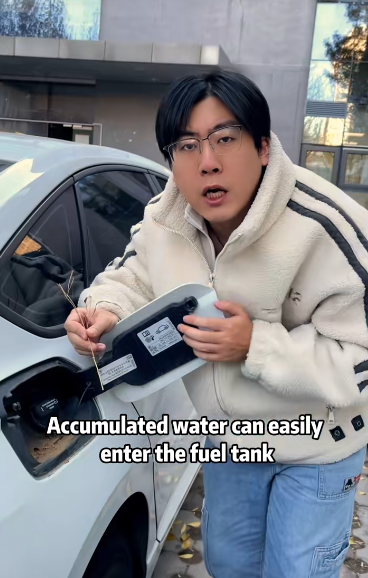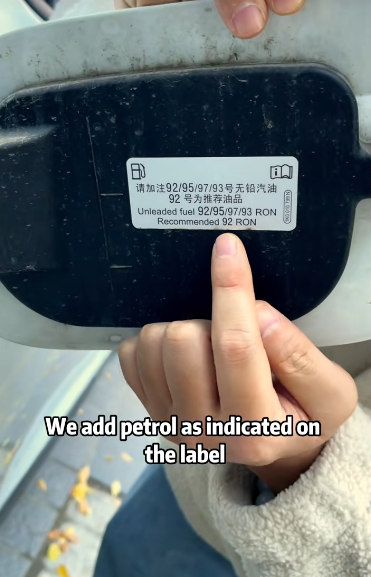
We fill our cars with fuel regularly, yet most of us barely give a second thought to one small but essential component: the fuel tank cap. It’s something we twist open, twist shut, and promptly forget—until we misplace it or forget to tighten it properly. But this seemingly simple part hides a few fascinating secrets and plays a surprisingly important role in your vehicle’s performance and safety. So, do you know the secret of the fuel tank cap? Let’s explore.
The Hidden Importance of the Fuel Cap
At first glance, a fuel tank cap might seem like nothing more than a cover for your gas tank. However, it serves several critical functions that go far beyond just keeping the fuel in.
1. Sealing the System:
The primary function of the fuel cap is to seal the fuel tank. This prevents fuel vapors from escaping into the atmosphere, which is important not only for efficiency but also for environmental reasons. Gasoline evaporates easily, and if the cap is missing or not sealed properly, it can release harmful vapors that contribute to air pollution and smog.
2. Maintaining Pressure:
Modern cars use a closed fuel system that requires a specific amount of pressure for the engine to function efficiently. The fuel cap helps maintain this pressure. If the cap isn’t properly tightened or is damaged, the system can lose pressure, which may lead to poor engine performance and lower fuel efficiency.
3. Protecting the Fuel:
Another role of the fuel cap is to protect your fuel from external contaminants like dirt, water, and debris. If those get into your gas tank, they can damage your fuel system and cause the engine to run poorly—or not at all.
4. Preventing Theft or Tampering:
Many modern fuel caps have locking mechanisms to prevent theft or tampering. While fuel theft might not be common in every area, in places where gas prices are high, or during shortages, this can be a concern. A locking cap adds an extra layer of security.

The Warning Light Mystery
Have you ever had your car’s “check engine” light come on for no apparent reason? One of the most common—and least expected—causes is a loose or faulty fuel cap.
When the cap is not secured tightly or the seal is damaged, it can cause a small leak in the evaporative emissions system. Modern vehicles have sensors that detect these tiny leaks and trigger the check engine light. Fortunately, tightening the cap or replacing it with a new one can often resolve the issue without an expensive repair.
This little secret is often overlooked, and many car owners panic when the light appears. Next time, before rushing to the mechanic, check your fuel cap first.
A Brief History of the Fuel Cap
Fuel caps have been around since the early days of automobiles. In older cars, they were simple metal or plastic covers. As cars became more sophisticated and environmental regulations tightened, so did the design of the fuel cap.
In the 1990s, the U.S. government introduced strict emissions standards, leading to the development of more secure, pressure-sensitive, and vapor-tight fuel caps. Today, they are often integrated with sensors and even connected to vehicle computers.

The Secret Symbols
Here’s another interesting secret: many cars include a tiny arrow on the fuel gauge inside the dashboard, next to the gas pump icon. That arrow points to the side of the car where the fuel cap is located. This is especially handy when driving a rental car or a new vehicle you’re not familiar with. Most people don’t notice this until someone points it out—and then they never forget it!
Capless Fuel Systems
In recent years, some car manufacturers have introduced “capless” fuel systems. These systems eliminate the traditional twist-on cap and use a spring-loaded flap instead. While convenient—no more forgetting to tighten the cap or losing it—they still have their own set of secrets.
Capless systems are designed to seal just as effectively, but they require special funnels if you ever need to add fuel from a gas can. If you try to pour fuel without the proper nozzle, it might spill or fail to open the flap. This is something many drivers don’t realize until they’re stuck on the side of the road with an empty tank and no way to refuel.
Fuel Cap Maintenance
Yes, even the fuel cap needs a bit of attention from time to time. Over the years, the rubber gasket on the cap can wear out, crack, or become loose. If your vehicle frequently smells of gasoline or the check engine light is on with no clear cause, your fuel cap might be the culprit.
Replacing it is easy and inexpensive—usually under $20. In some states and countries, emissions testing centers even check your gas cap for leaks, and failing the test means replacing the cap before your car is certified.

Fun Fact: It’s Often Forgotten
You might be surprised to learn that fuel caps are one of the most commonly forgotten car parts. Every year, thousands of people drive off from the gas station without securing their cap. Some leave it on the roof; others drop it on the ground. As a result, gas stations often keep a small collection of lost fuel caps behind the counter.
To avoid losing yours, many caps are now attached to the vehicle with a small tether. Still, if your cap isn’t tethered, it’s a good habit to double-check after filling up.

What to Do If You Lose It
Driving without a fuel cap won’t immediately destroy your car, but it’s not recommended. Without the cap, fuel can evaporate, your engine light may come on, and contaminants can enter your tank. If you lose your cap, try to replace it as soon as possible. Auto parts stores usually carry universal caps that fit most vehicles, and your car’s dealership can supply the exact match.
The Takeaway
So, what’s the secret of the fuel tank cap? It’s that this tiny, often-overlooked part of your car does far more than you think. It protects your fuel, preserves engine performance, prevents pollution, and even saves you from a potentially expensive diagnostic bill.
Next time you fuel up, take a moment to appreciate the humble fuel cap. Twist it tight—until it clicks—and remember that even the smallest parts of your car can have big responsibilities. Knowing this secret could save you time, money, and a lot of unnecessary stress.


